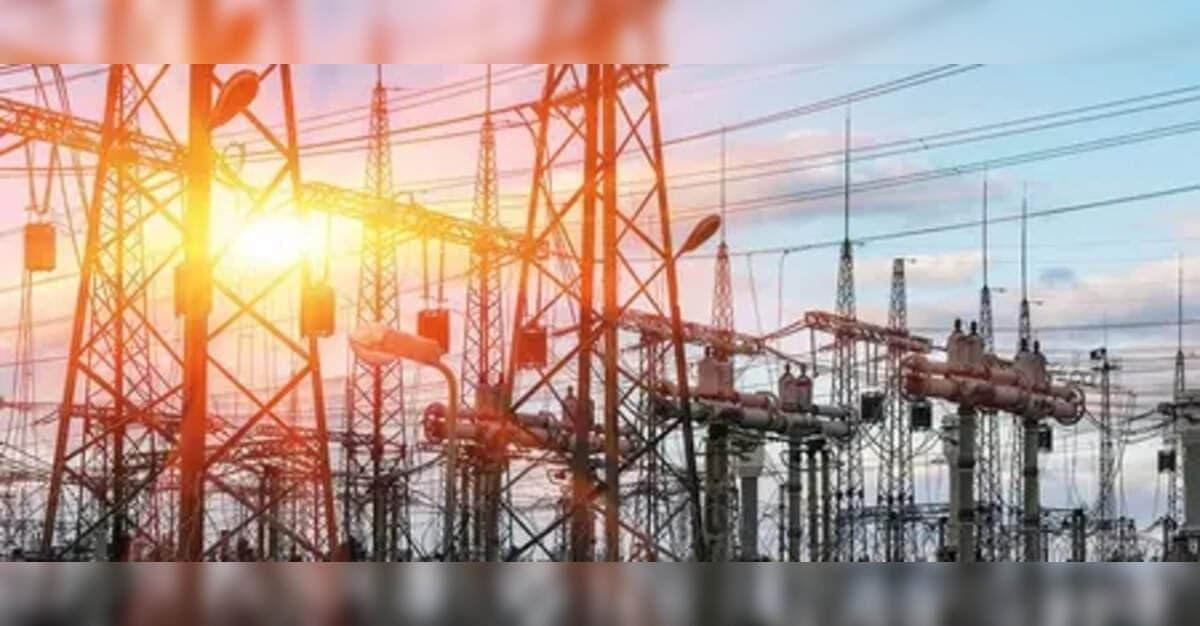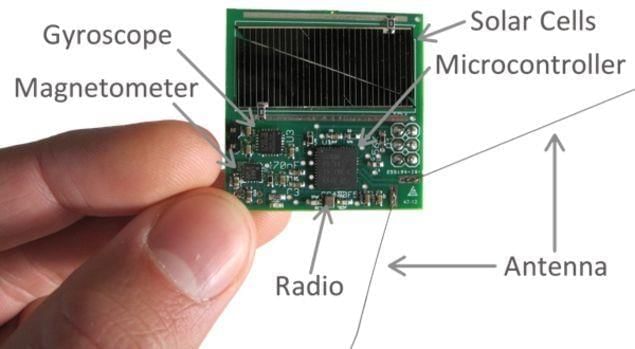UPSC Daily Current Affairs: 2nd July 2025 | Current Affairs & Hindu Analysis: Daily, Weekly & Monthly PDF Download
GS2/Polity
Reserved Faculty Posts are Still Vacant and Out of Reach
Source: The Hindu
Why in News?
India's commitment to social justice is not only a moral and ideological principle but also a legal and ethical obligation aimed at rectifying historical injustices. Despite the implementation of reservation policies, a significant gap persists in the filling of reserved faculty positions in educational institutions, raising critical concerns regarding systemic barriers to social justice.
Key Takeaways
- Central universities in India report substantial vacancies in reserved faculty positions.
- Systemic barriers, including institutional autonomy and biased recruitment practices, hinder compliance with reservation policies.
- The introduction of the 13-point roster system has exacerbated the shortfall in representation.
Additional Details
- Current Vacancies: According to a report from the Union Education Minister in April 2021, there are 2,389 vacant SC faculty positions, 1,199 for STs, and 4,251 for OBCs across 45 central universities.
- Impact of the 13-Point Roster System: This system, implemented in 2018, has shifted the calculation of reservations from the institution level to individual departments, adversely affecting smaller departments that often do not meet the threshold for mandatory reserved posts.
- Discretionary Rejections: A significant number of qualified candidates from SC, ST, and OBC backgrounds face arbitrary rejections based on vague criteria, leading to a culture of exclusion in academia.
The ongoing underrepresentation of marginalized communities in university faculties represents not just a failure in policy but a broader moral and democratic crisis. Universities should embody the diversity of society and promote values of equity and inclusion. It is imperative that reforms are implemented, accountability is increased, and leadership is visionary to truly realize the promise of social justice in India's higher education system.
GS2/International Relations
A Triangular Dynamic in South Asia’s Power Politics
Source: The Hindu
 Why in News?
Why in News?The geopolitical landscape of South Asia is significantly influenced by the triangular relationship between the United States, India, and Pakistan. This complex narrative is shaped by strategic necessities, ideological contests, national interests, and historical legacies. Recent developments, particularly during Donald Trump's return to power, have brought new perspectives to longstanding alliances and emerging fractures.
Key Takeaways
- The U.S. has shifted its foreign policy approach, focusing on short-term strategic gains.
- India's initial support for Trump has waned due to U.S. overtures toward Pakistan.
- Pakistan is recalibrating its strategy amidst political turmoil, emphasizing military strength and diplomatic maneuvering.
- The U.S. faces challenges in balancing short-term imperatives with long-term partnerships.
Additional Details
- U.S. Pivot: Trump's administration demonstrates a departure from traditional diplomacy, favoring transactional relationships, particularly with Pakistan.
- Revival of U.S.-Pakistan Relations: The authorization of financial support for Pakistan's military signals a shift in U.S. foreign policy that threatens Indo-U.S. ties.
- India’s Doctrinal Shift: In response to U.S. overtures to Pakistan, India has adopted a more assertive military doctrine, exemplified by Operation Sindoor.
- Pakistan’s Strategic Moves: Pakistan is leveraging its geographic position to enhance its relevance in U.S. strategic interests, despite its economic limitations.
- America’s Balancing Act: The U.S. is caught between maintaining its partnership with India and engaging with Pakistan, complicating its foreign policy in the region.
The triangular dynamic among the United States, India, and Pakistan is characterized by shifting allegiances and strategic opportunism. The U.S. must navigate its short-term goals while maintaining long-term values, and India must adjust to a new regional order without compromising its sovereignty.
GS2/International Relations
‘At Sea Observer’ Mission by QUAD
Source: Indian Express
Why in News?
The Coast Guards of India, Japan, the United States, and Australia have launched the inaugural ‘QUAD At Sea Ship Observer Mission’ aimed at enhancing maritime collaboration and security in the Indo-Pacific region.
Key Takeaways
- The ‘At Sea Ship Observer Mission’ is a historic cross-embarkation initiative.
- It was developed as part of the Wilmington Declaration (2024) to improve interoperability and maritime domain awareness.
- Participation includes officers from all QUAD nations, highlighting gender inclusion.
- The mission facilitates joint training operations including standard operating procedure (SOP) drills, search and rescue (SAR), and patrolling.
- India's involvement aligns with initiatives like SAGAR and the Indo-Pacific Oceans Initiative (IPOI).
- This mission operationalizes commitments made at the 6th QUAD Leaders’ Summit.
- Future plans include establishing a ‘QUAD Coast Guard Handshake’ to foster trust and resilience.
- Aims to enhance emergency response coordination among QUAD Coast Guards.
Additional Details
- QUAD (Quadrilateral Security Dialogue): A strategic dialogue involving India, Australia, Japan, and the United States focused on maintaining peace and stability in the Indo-Pacific.
- Nature of Alliance: Though not a formal alliance, QUAD emphasizes a strong consensus on maintaining open sea lanes, secure supply chains, and technological partnerships.
- Objectives: Promotes a Free and Rules-Based Order to counter coercive actions in the region.
- Formation History: Initiated post-2004 tsunami, formally proposed by Japan’s PM Shinzo Abe in 2007, went dormant after Australia’s 2008 withdrawal, and was revived in 2017 due to concerns over China's assertiveness.
- Expanded Focus Areas: QUAD has broadened its scope to include health, infrastructure, cybersecurity, emerging technologies, and climate change.
- Joint Activities: The group conducts military drills, high-level dialogues, and supports regional capacity-building efforts.
- QUAD-Plus Engagements: Involves collaborations with countries like South Korea, Vietnam, and New Zealand, indicating potential future expansion.
The ‘At Sea Ship Observer Mission’ signifies a significant step towards collaborative maritime security among QUAD nations, contributing to regional stability and operational efficiency.
GS3/Economy
Employment Linked Incentive Scheme: India’s Bold Push for Jobs in Manufacturing
Source: TOI
Why in News?
The Union Cabinet has approved the Employment-Linked Incentive (ELI) scheme with a substantial allocation of Rs. 99,446 crore aimed at boosting employment generation across India.
Key Takeaways
- The ELI scheme is part of a broader initiative to create over 3.5 crore jobs within two years.
- It particularly focuses on integrating first-time employees and enhancing job opportunities in the manufacturing sector.
- The scheme was unveiled in the Union Budget 2024-25 as part of a Rs 2 lakh crore employment and skilling package.
Additional Details
- Objectives and Scope: The ELI scheme aims to address significant challenges in India's labour market, including low formalisation and slow job growth in manufacturing. It seeks to support both first-time employees and incentivise employers.
- Core Components:
- Part A: Incentives for First-Time Employees: Designed for employees registering with the Employees’ Provident Fund Organisation (EPFO). Eligible employees with salaries up to Rs 1 lakh will receive one month’s EPF wage (up to Rs. 15,000) in two instalments, benefiting around 1.92 crore workers.
- Part B: Incentives for Employers: Targets employers creating new jobs, providing monthly incentives based on salary brackets. Employers must hire a minimum number of new employees to qualify, with the scheme projected to create approximately 2.60 crore new jobs.
- Implementation and Payment Mechanism: The scheme will utilize a Direct Benefit Transfer (DBT) model for transparent disbursements. Payments to employees will go through the Aadhaar Bridge Payment System (ABPS), while employer incentives will be credited directly into PAN-linked accounts.
- Broader Implications: Beyond wage support, the scheme emphasizes labour formalisation and skill development, aiming to include informal workers in the social security net.
The ELI scheme is a significant step towards creating a structured employment landscape in India, particularly in the post-pandemic era. While it has garnered support from industry bodies, some trade unions have raised concerns over accountability, indicating a need for careful monitoring and evaluation of the scheme's implementation.
GS3/Science and Technology
Electronic Private Automatic Branch Exchange (EPABX) in Modern Communication
Source: PIB
 Why in News?
Why in News?In most modern office environments, internal and external communication is effectively managed through a technology known as EPABX — Electronic Private Automatic Branch Exchange.
Key Takeaways
- EPABX is essential for efficient management of phone calls in offices.
- It facilitates both intercom communication and external telephone access.
- Modern systems enhance productivity with features like voicemail and call recording.
Additional Details
- What is EPABX: It is a system used by offices to manage internal and external phone calls efficiently.
- Internal and External Communication: EPABX enables intercom communication within the organization and provides access to external telephone lines through a unified network.
- Call Handling Features: EPABX can route, transfer, forward, or hold calls, reducing the need for multiple phone lines and improving overall communication.
- Modern Features: Advanced EPABX systems offer voicemail, call recording, automated attendants, and digital tool integration for business productivity.
How EPABX Works?
- Starting a Call: When the phone is picked up, an off-hook signal goes to the EPABX, which responds with a dial tone.
- Making Internal Calls: Users dial an extension number (like 104), and the EPABX connects them through its internal switching system.
- Making External Calls: To reach outside numbers, users dial an access code (usually 0) followed by the number; EPABX connects via the Public Switched Telephone Network (PSTN).
- Handling Incoming Calls: Calls from outside are routed to the right extension using either a receptionist or an automated system (IVR) in newer setups.
- Switching Logic: The EPABX system works like a railway yard, directing signals along the correct path between the caller and the recipient.
Advancements in EPABX Technology
- Early Systems: Older EPABX systems used electromechanical switches like crossbars for call routing.
- Digital Transition: Since the 1980s, systems adopted Pulse Code Modulation (PCM) and Time Division Multiplexing (TDM) to digitize and share voice signals over fewer lines.
- VoIP Technology: Modern EPABX uses Voice over IP (VoIP) to transmit calls over the internet, similar to email routing using IP addresses.
Question
With reference to communication technologies, what is/are the difference / differences between LTE (Long-Term Evolution) and VoLTE (Voice over Long-Term Evolution)?
- 1. LTE is commonly marketed as 3G and VoLTE is commonly marketed as advanced 3G.
- 2. LTE is data-only technology and VoLTE is voice-only technology.
Select the correct answer using the code given below:
- Options: (a) 1 only (b) 2 only (c) Both 1 and 2 (d) Neither 1 nor 2
In summary, EPABX systems play a vital role in modern communication within organizations, offering various features that enhance efficiency and productivity.
GS2/Governance
Empowering Governance with Outcome-Driven Data: A Path to Viksit Bharat
Source: TOI
Why in News?
India is undergoing a transformation towards outcome-driven monitoring to enhance the effectiveness of governance. Several states are piloting innovative frameworks that utilize data to improve public service delivery.
Key Takeaways
- Transitioning from traditional bureaucratic practices to an outcome-oriented, citizen-centric approach.
- Current data usage focuses more on inputs than actual results in sectors like nutrition, education, health, and livelihoods.
- The introduction of the 4As framework aims to make data more actionable.
- States like Uttar Pradesh, Andhra Pradesh, Telangana, and Odisha are leading the way with innovative data systems.
Additional Details
- 4As Framework:This framework consists of four components:
- Ascertain: Identify critical outcomes that matter most.
- Assess: Conduct regular, low-burden assessments to track progress.
- Assist: Provide support to field workers through mentoring and training.
- Adapt: Modify strategies based on real-time feedback and citizen needs.
- State-Level Innovations: States are experimenting with systems like the NIPUN Bharat Mission and other pilot programs that integrate real-time data analysis to improve educational outcomes, resulting in significant improvements in foundational learning.
- The establishment of Data Analytics Units (DAUs) within planning departments is proposed for synthesizing data from multiple sources to inform policy decisions more effectively.
This shift towards a data-driven approach not only aims to enhance governance outcomes but also promotes a culture of accountability and responsiveness to citizen needs.
GS3/Economy
Latest Agriculture Output Report - Fruits Surge, Cereals Slide
Why in News?
New data from the Ministry of Statistics and Programme Implementation (MoSPI) highlights changing food preferences and consumption patterns, indicating that farmers are increasingly shifting towards high-value crops. Over the last decade, the Gross Value of Output (GVO) has seen significant growth, particularly in fruits like strawberries and pomegranates and vegetables such as parwal (pointed gourd) and mushrooms.
Key Takeaways
- The Gross Value Added (GVA) of agriculture rose by approximately 225% from ₹1,502 thousand crore in 2011-12 to ₹4,878 thousand crore in 2023-24.
- High-value crops have shown dramatic increases in output, with strawberries experiencing a rise of over 40 times in GVO.
- Meat's share in agriculture GVO increased, while cereals saw a decline, highlighting a shift in dietary preferences.
Additional Details
- Gross Value of Output (GVO): This term refers to the total value of agricultural products produced before accounting for the costs of inputs. The GVO is a crucial measure of agricultural productivity.
- The GVO of certain fruits and vegetables has surged dramatically between 2011-12 and 2023-24, including:
- Strawberries: GVO rose over 40 times to ₹55.4 crore (constant prices) and nearly 80 times to ₹103.27 crore (current prices).
- Parwal (pointed gourd): Increased 17-fold to ₹789 crore.
- Pumpkin: Rose almost 10 times to ₹2,449 crore.
- Pomegranates: Grew over 4 times to ₹9,231 crore.
- Mushrooms: Jumped 3.5 times to ₹1,704 crore.
- Despite the growth in production, fruit consumption remains relatively low as a percentage of Monthly Per Capita Consumption Expenditure (MPCE), with rural MPCE rising from 2.25% to 2.66% and urban MPCE slightly dipping from 2.64% to 2.61%.
- Urban and rural MPCE on cereals has also declined, reflecting changing dietary habits, with urban MPCE falling from 6.61% to 3.74% and rural MPCE from 10.69% to 4.97%.
In summary, the latest report from MoSPI illustrates a structural shift in India's agricultural landscape, moving from traditional staples towards high-value fruits, vegetables, and animal products. This shift is driven by various factors, including technological advancements and evolving consumer preferences, aligning with Engel's Law where the share of expenditure on food decreases as income rises.
GS3/Science and Technology
What is India Energy Stack?
Source: Indian Express
 Why in News?
Why in News?The Union Ministry of Power has announced the formation of a task force responsible for designing the India Energy Stack (IES), a new Digital Public Infrastructure (DPI) aimed at revolutionizing the energy sector in India.
Key Takeaways
- The IES aims to create a unified, secure, and interoperable digital backbone for India's entire energy ecosystem.
- It includes stakeholders such as energy producers, grid operators, distribution companies (discoms), consumers, regulators, and markets.
- The task force is comprised of 17 members, with Nandan Nilekani serving as Chief Mentor and RS Sharma as Chairperson, supported by REC Ltd as the nodal agency.
- A 12-month proof of concept (PoC) will test key components, including the Utility Intelligence Platform (UIP), in states like Delhi, Gujarat, and Maharashtra.
- The initiative is expected to facilitate India's transition to net-zero emissions and enhance consumer participation in energy trading.
Additional Details
- Scalability and Integration: The IES supports the integration of technologies such as smart meters, real-time analytics, and battery storage systems, aligning with India's energy digitization goals.
- Unique IDs: It provides digital identification for consumers, assets, and energy transactions, enabling seamless tracking and verification.
- Real-Time Data Sharing: The platform features consent-based and standardized data exchange mechanisms that improve efficiency and transparency among stakeholders.
- Open APIs: The IES facilitates the integration of third-party solutions, promoting innovation within energy fintech ecosystems.
- Interoperability: It allows communication between fragmented digital platforms used by various state utilities and regulators, enhancing overall functionality.
- Peer-to-Peer Energy Trading: This feature empowers prosumers (producers + consumers) to buy, sell, or store energy using a digital marketplace.
- Carbon Offset Tracking: Supports environmental compliance through transparent and verifiable emission reduction accounting.
- Decentralised Energy Management: Enables small-scale producers and communities to engage in energy markets via smart contracts and virtual power plants.
The India Energy Stack represents a significant step towards modernizing India's energy landscape, facilitating the integration of renewable energy sources, and enhancing consumer participation in the energy market.
UPSC 2016
Which one of the following is a purpose of ‘UDAY’, a scheme of the Government?
- (a) Providing technical and financial assistance to start-up entrepreneurs in the field of renewable sources of energy
- (b) Providing electricity to every household in the countries by 2018
- (c) Replacing the coal-based power plants with natural gas, nuclear, solar, wind and tidal power plants over a period of time
- (d) Providing for financial turnaround and revival of power distribution companies
GS3/Science and Technology
Breakthrough in Altermagnets Study
Source: PIB
 Why in News?
Why in News?Researchers at the S N Bose National Centre for Basic Sciences (SNBNCBS) have made a significant discovery regarding the novel transport behavior in chromium antimonide (CrSb), a newly identified member of the promising class of magnetic materials known as altermagnets.
Key Takeaways
- Altermagnets combine features of both ferromagnets and antiferromagnets.
- They exhibit unique internal magnetic behavior without attracting external metals.
- Ideal for spintronics, enabling faster and energy-efficient electronic devices.
Additional Details
- Definition: Altermagnets are a new class of magnetic materials that merge the properties of ferromagnets (which display external magnetism) and antiferromagnets (which do not).
- Unique Feature: Unlike regular magnets, they do not attract metals but maintain active internal magnetic behavior, making them valuable in advanced technologies.
- Use in Spintronics: These materials leverage electron spin for improved device efficiency.
- No Magnetic Interference: They do not generate external magnetic fields, ensuring stability and safety for nearby electronics.
- Energy Efficient: Their structure mitigates heat and energy loss, suitable for modern, low-power gadgets.
- Scientific Rarity: With very few known altermagnets, each discovery holds significant importance to materials science.
- Potential Applications: Altermagnets could aid in developing smaller memory chips and faster processors, potentially even supporting quantum computing.
- Internal Action: They are likened to "quiet magnets," functioning internally without causing magnetic noise.
Recent Discovery - Chromium Antimonide (CrSb)
- Indian Breakthrough: Indian scientists have identified CrSb as a new altermagnet, exhibiting rare direction-dependent conduction properties.
- Directional Behavior: CrSb demonstrates n-type conduction when current flows along its layers and p-type conduction across them.
- First of its Kind: This marks the first instance of an altermagnet displaying dual conduction behavior in different directions.
- Device Simplification: The ability of CrSb to act as both p-type and n-type can lead to reduced circuit sizes and eliminate the need for doping.
- Eco-friendly Material: Composed of non-toxic, common elements, CrSb is ideal for sustainable electronics.
- Future Potential: CrSb may be used in solar cells, batteries, and processors, enhancing efficiency while being environmentally friendly.
- Environment-Friendly Tech: This material supports low-cost, eco-friendly electronics without compromising performance.
The discoveries surrounding altermagnets, particularly chromium antimonide, open new avenues for research and application in the field of materials science, reinforcing the importance of sustainable and efficient technologies.
UPSC 2021
Magnetite particles, suspected to cause neurodegenerative problems, are generated as environmental pollutants from which of the following?
- 1. Brakes of motor vehicles
- 2. Engines of motor vehicles
- 3. Microwave stoves within homes
- 4. Power plants
- 5. Telephone lines
Select the correct answer using the code given below.
- (a) 1, 2, 3 and 5 only
- (b) 1, 2 and 4 only*
- (c) 3, 4 and 5 only
- (d) 1, 2, 3, 4 and 5
GS1/Geography
Factors Behind Monsoon’s Early Nationwide Arrival
Source: Indian Express
Why in News?
The southwest monsoon has covered the entire country by June 29, which is nine days earlier than the usual date of July 8. Notably, this is only the tenth occurrence since 1960 that the monsoon achieved nationwide coverage in June.
Key Takeaways
- The monsoon's arrival in Kerala on May 24 marked an early onset, laying the groundwork for subsequent rapid progress.
- Monsoon conditions varied across India, with the southern, eastern, and northeastern regions experiencing early arrival, while northwest India was near normal and central India saw slight delays.
Additional Details
- Low Pressure Systems: In June, India experienced five low-pressure systems that acted as moisture magnets, drawing in rain-bearing winds and accelerating the monsoon's movement inland.
- Active Madden-Julian Oscillation (MJO): This is a system of clouds, rainfall, winds, and pressure that travels eastward near the equator. An active MJO phase enhances the monsoon by increasing cloud cover and moisture, leading to stronger rainfall.
- Favourable Monsoon Trough Position: The monsoon trough, an elongated low-pressure area, is crucial for determining rainfall distribution. Its favorable position this year, shifted south of its normal location, facilitated increased moisture inflow and early rainfall across various regions.
- Neutral ENSO Condition: The El Niño-Southern Oscillation (ENSO) is a climate pattern with phases affecting rainfall. A neutral phase, where sea surface temperatures are close to average, supports normal monsoon progression.
- Neutral IOD Conditions: The Indian Ocean Dipole (IOD) is marked by temperature differences in the Indian Ocean. A neutral IOD phase this year resulted in minimal impact on monsoon rainfall, allowing other factors like MJO and ENSO to drive the monsoon.
This year's monsoon has been characterized by its early onset, rapid progression, sudden pauses, and localized weather disasters. As the season continues, it remains uncertain whether these patterns will stabilize or intensify further.
|
44 videos|5271 docs|1113 tests
|
FAQs on UPSC Daily Current Affairs: 2nd July 2025 - Current Affairs & Hindu Analysis: Daily, Weekly & Monthly
| 1. What are Reserved Faculty Posts, and why are they significant in South Asia's education system? |  |
| 2. How does the triangular dynamic in South Asia's power politics influence regional stability? |  |
| 3. What is the purpose of the ‘At Sea Observer’ mission by QUAD, and what does it aim to achieve? |  |
| 4. What is the Employment Linked Incentive Scheme in India, and how does it aim to boost manufacturing jobs? |  |
| 5. How does the concept of India Energy Stack contribute to the country’s energy management? |  |
















